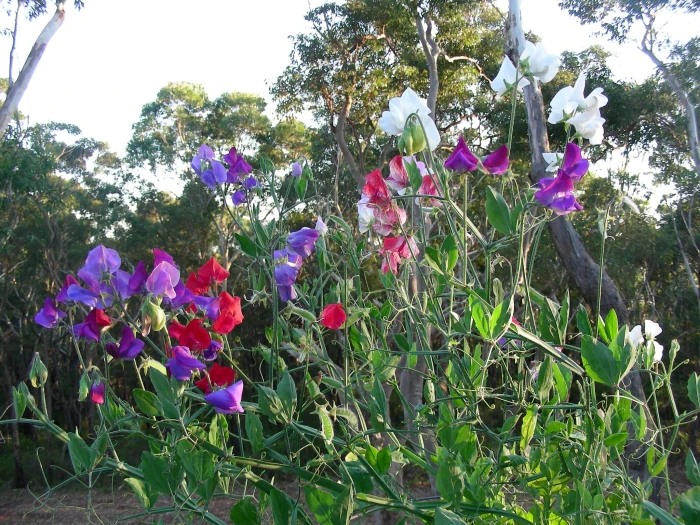Sweetpea
(Lathyrus odoratus)
Sweetpea (Lathyrus odoratus)
/
/

Doug Beckers
CC BY-SA 2.0























































Estimated Native Range
Climate Requirements
| • Precipitation | 2" - 92" |
| • High Temp. | 56°F - 111°F |
| • Low Temp. | -10°F - 64°F |
Summary
Sweetpea is valued for its fragrant, colorful flowers and its ability to quickly cover trellises and fences, adding vertical interest to gardens. It is commonly used in border planting and as cut flowers due to their delightful scent and attractive blooms. Sweetpea prefers full sun but can tolerate part shade, and it requires medium amounts of water. It is adaptable to various soil types, provided they have good drainage. While generally easy to grow, Sweetpea can be susceptible to pests such as aphids and diseases like powdery mildew. It’s important to provide adequate air circulation around plants to minimize disease risk.CC BY-SA 4.0
Plant Description
- Plant Type: Vine, Herb
- Height: 3-8 feet
- Width: 2-3 feet
- Growth Rate: Rapid
- Flower Color: Blue, Pink, Purple, Red, White
- Flowering Season: Spring, Summer
- Leaf Retention:
Growth Requirements
- Sun: Full Sun
- Water: Medium
- Drainage: Medium
Common Uses
Bee Garden, Bird Garden, Border Plant, Butterfly Garden, Deer Resistant, Fragrant, Hummingbird Garden, Potted Plant, Rock Garden, Showy Flowers
Natural Habitat
Native to the Mediterranean region, including Southern Italy and Sicily, thriving in open meadows and field edges
Other Names
Common Names: Sweet Pea, Etirli Kululche, Bunte Wicke, Duftende Platterbse, Duftwicke, Gartenwicke, Guisante De Olor, Laats, Tuoksuherne, Gesse Odorante
Scientific Names: Lathyrus odoratus, Lathyrus odoratus var. siculus, Lathyrus odoratus f. pleniflorus, Lathyrus cyprius, Lathyrus maccaguenii, Lathyrus odoratus var. albus, Lathyrus odoratus var. ater, Lathyrus odoratus var. carneus, Lathyrus odoratus var. pardalinus
GBIF Accepted Name: Lathyrus odoratus L.